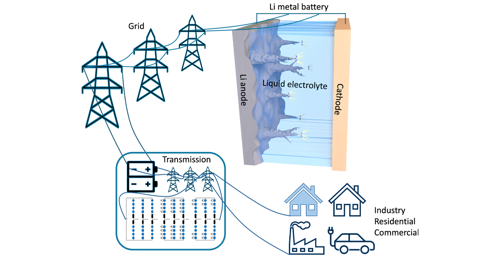High temperature battery technology

Energy storage in the grid is crucial to its stability and efficiency since it is the key to suppress the sharp fluctuations and to avoid interruption of continuous power supply. Li-ion batteries are currently the dominant energy storage technology from portable electronics to large-scale grid energy storage. However, the utilization of LIBs within grid units working at high temperature is hindered by the rapid decay of their electrochemical performance. New battery technology allowing working temperatures at 50-80°C has potential for significant impact on design of energy storage systems for grid applications.
The aim of the project is to enable the integration of batteries as energy storage in high temperature environments in grid applications. The overall goal is to develop cell concepts with long cycle life, high power and energy density at 50-80°C combined with sustainability from materials point of view. The temperature range is compatible with the environment of power-electronic convertors in grid applications and the aim is also to evaluate the concepts with respect to typical cycling patterns in these systems. The aim is to uncover the aging mechanism at high temperature and to design advanced electrolytes to allow working temperatures at 50-80°C compatible with long cycle life, high safety, and good energy/power performance.
Currently, market of grid scale energy storage (GSES) application is still dominated the LIBs, but they are insufficient to meet all needs of energy storage in an effective way. For instance, LIBs as energy storage solution for the convertor unit of the grid needs to be placed outside the converter hall, which is usually working at high temperature (50°C-80°C), decreasing the possibility for distributed systems and new architecture of the storage system. The road block is that the performance of current LIBs will decay significantly, shortening the lifespan of energy storage system. In addition, operating LIBs at this temperature would pose considerable safety concerns.
Electrolytes as the key for high temperature stability
The reasons for performance decay of LIBs at high temperature is mainly related to the electrolyte. High temperature induces enhanced decomposition of the electrolyte components, organic solvents and Li-salt, resulting in development of resistive interphases that rapidly reduces the performance but can also result in gas evolution with potential catastrophic failure. Thus, the development of advanced electrolytes is considered as the main direction for high-temperature batteries. Two main avenues can be explored with either modifying the liquid electrolyte formulation by changing the solvent and/or solvent/salt ratio or moving to solid electrolytes, which are generally more stable and less flammable.
In the project we start from a bottom-up approach by looking at solvents and salts with high temperature stability and considering an electrochemistry-based model for aging behaviour at high temperature by quantitative evaluation of capacity loss, decomposition of electrolyte and cell impedance. The projects build upon a collaboration between Chalmers University of Technology and Karlstad University to benefit from both experimental and modelling approaches, paired with input from industry on the needs from an application point of view.
Involved in the project
Quan Wu, PhD Student (Chalmers), Aleksandar Matic, professor (Chalmers), Moyses Arauyo, Professor (Karlstad Univ.)
Partners
Chalmers, Hitachi Energy, Västra Götalandsregionen, Volvo Energy, Swedish Energy Agency